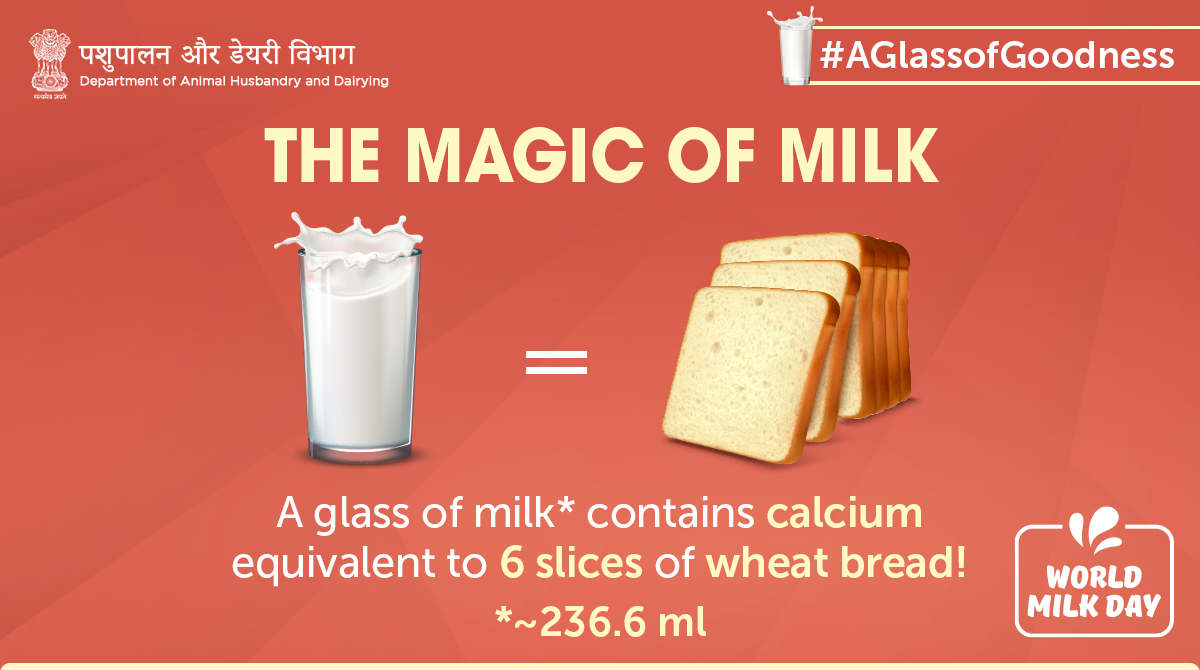Milk Day
World Milk Day
The World Milk Day is commemorated every year on June 01 by the Food and Agriculture Organisation (FAO) of the United Nations to celebrate all aspects of milk.
The first World Milk Day was held in 2001.
Need
The Day provides an opportunity to focus attention on milk and to publicise activities connected with milk and the milk industry. The fact that many countries choose to do this on the same day lends additional importance to individual national celebrations and shows that milk is a global food.
June 01 was chosen for the World Milk Day because a number of countries were already celebrating a national milk day on or around this time.
National Milk Day
National Milk Day is celebrated every year on November 26. This special day honours the birth anniversary of Dr. Verghese Kurien, the "Father of the White Revolution in India," highlighting the achievement and importance of the dairy sector in our country.
India is leading in world milk production and is making its mark in global markets.
On the occasion, the National Gopal Ratna Awards are presented to the winners of the Best Dairy Farmer rearing indigenous cattle/buffalo breeds, Best Artificial Insemination Technician and Best Dairy Cooperative Society (DCS)/ Milk Producer Company/ Dairy Farmer Producer Organization in the country.
Nutritive facts of Milk
 Milk is considered as nature’s most unique food. The major and minor constituents/nutrients of milk include milk fat, protein (casein and whey proteins), carbohydrates (lactose, also known as milk sugar), minerals (calcium, phosphorous), vitamins (A, B, D), enzymes etc.
Milk is considered as nature’s most unique food. The major and minor constituents/nutrients of milk include milk fat, protein (casein and whey proteins), carbohydrates (lactose, also known as milk sugar), minerals (calcium, phosphorous), vitamins (A, B, D), enzymes etc.
The nutrients in milk are present in a balanced proportion making it a complete food. In addition most of these nutrients (such as minerals) in milk are present in a form that are easily absorbed in our body. Some individual components of milk also exhibit specific nutritional and health promoting properties.
Since time immemorial , milk is being consumed by the human beings of all age groups, either as liquid milk or in the form of various nutritious products such as dahi, paneer, buttermilk (chhass), shrikhand, ghee, butter (makhan), milk based sweets, etc.
The unique composition of milk (water and other nutrients) makes it a highly perishable commodity. It is an ideal medium for growth of microorganisms and, therefore, highly susceptible to microbial spoilage. If not produced and handled in a proper hygienic manner, various types of spoilage and disease-producing organisms can grow in milk and milk products and make these unfit/unsafe for human consumption.
Source : National Dairy Development Board
Last Modified : 11/29/2023
This topic provides information about the paramete...
